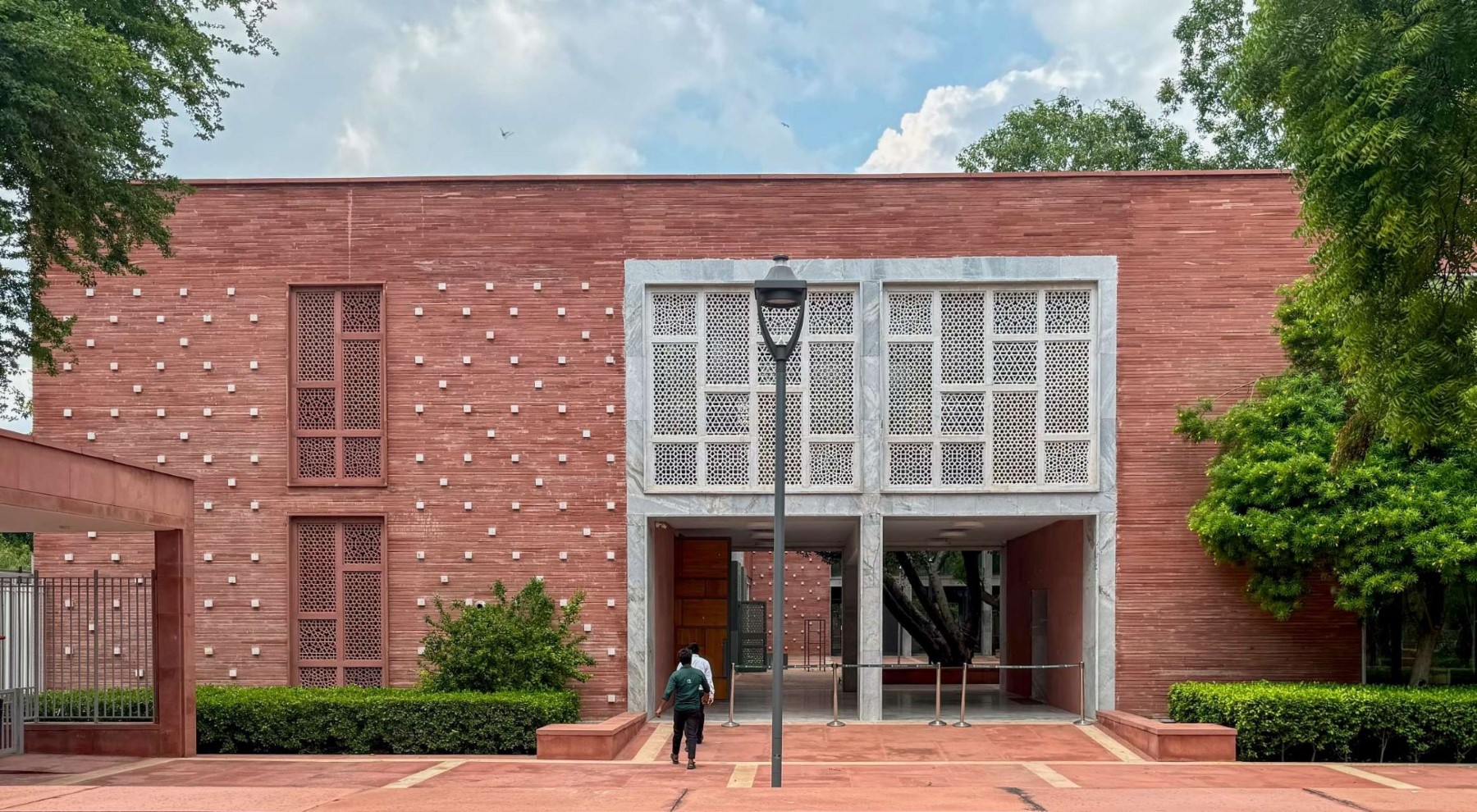
Project Details:
Name: Humayun’s Tomb Site Museum
Location: New Delhi, India
Status: Completed
Total Covered Ares: 9,815 sq. m.
Design Phase: 2014
Construction Phase: 2014 – 2024
Designed by: vir.mueller architects
Partners-in-Charge: Christine Mueller Gupta, Pankaj Vir Gupta
Team: Kapil Shokeen, Mansi Maheshwari, Avneet Kaur, Matthew Pinyan, Ranu Singh, Puja Pillai, Prashant Singh Hada, Monisha Nasa, Utsav Jain, Sourabh Jain, Nishtha Vishnoi
Structural Engineer: Himanshu Parikh
MEP Engineer: Jhaveri Associates
Landscape Architect: Shaheer Associates
Lighting & Acoustics: Fifth Dimension Technologies
Description: vir.mueller architects
Drawings: vir.mueller architects
Photographs: © Suryan//Dang and vir.mueller architects
Humayun’s Tomb Site Museum
The Humayun’s Tomb Site Museum has been envisioned as the spatial link between the significant and distinct historical sites of the Nizamuddin Basti, the Sundar Nursery, and the tomb of the second Mughal Emperor, Humayun. To establish a spatial threshold—significant in terms of according a sense of place for his ensemble of Mughal era landscape and architecture—the Archaeological Survey of India, supported by the Aga Khan Trust for Culture, proposes to build a Site Museum as a vital public amenity, facilitating the visitor’s experience of Humayun’s Tomb and adjacent sites.
The architectural concept for the new Site Museum draws from the tradition of subterranean ”Baolis’—medieval stepped wells that served as reservoirs for fresh water and provided a cool, skylit refuge for travellers. The architecture of the museum is also conceptually grounded in the Mughal commitment to aesthetic practice, illustrated through the relationship between architecture and nature.
Gaston Bachelard, in his text ‘The Right to Dream’, describes this as an “immense charity towards the beautiful.” He describes how, at dusk, gardeners might place lamps and a mirror before each lotus stem on the cusp of bloom so that the flower may blossom at dawn with greater confidence and delight in its own beauty. It is the splendour of this original imagination that enables us to rejoice in the clarity of this Mughal architecture over five centuries after its initial conception—an uncompromising illustration, positing beauty as integral to the act of building.
The Humayun’s Tomb Site Museum has been organized in two distinct and interlinked zones: a primary entrance plaza situated adjacent to Sundar Nursery and a subterranean museum complex near the entrance gate to Humayun’s Tomb. As in the Tomb of the Emperor Humayun, the sequence of arrival and procession through the Entry Plaza and Museum building assumes a sense of order in the formal arrival court. The Entry Plaza is comprised of multiple ticket counters, public amenities, and a café, as well as access to a souvenir shop, an auditorium, library, crafts gallery, and seminar rooms.
The Entry Plaza functions as a threshold from which visitors may orient themselves, organizing their itinerary within the many architectural features of the area. A two-storied structure, shaded under the foliage of large trees, defines the northern end of the plaza. It is built in conformance with the footprint and volume of the existing structure on this site and clad with red sandstone. The quality of stone craftsmanship remains a defining feature of Mughal architecture in India.
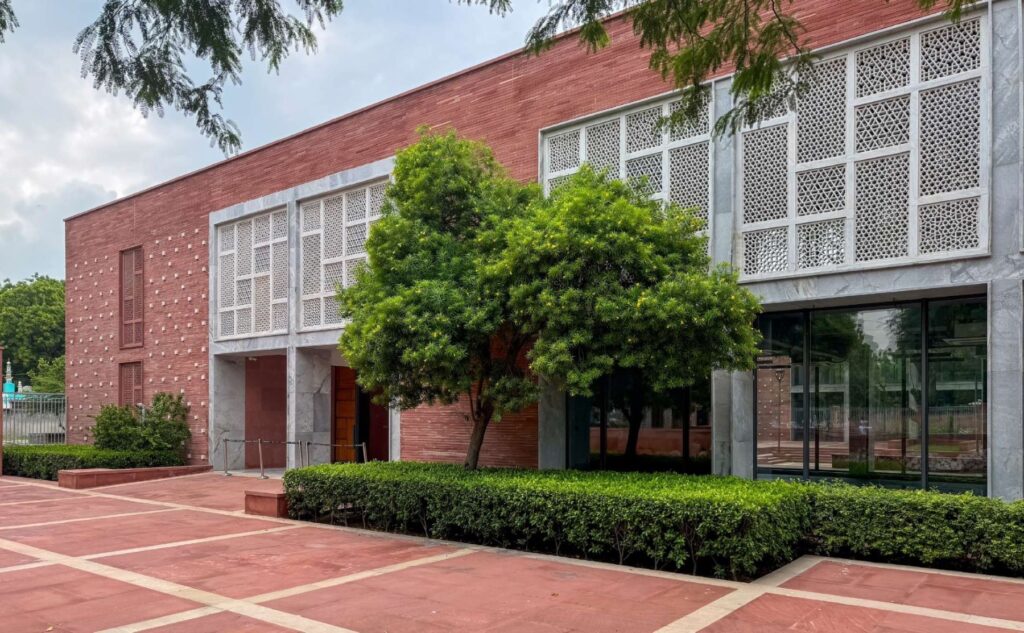

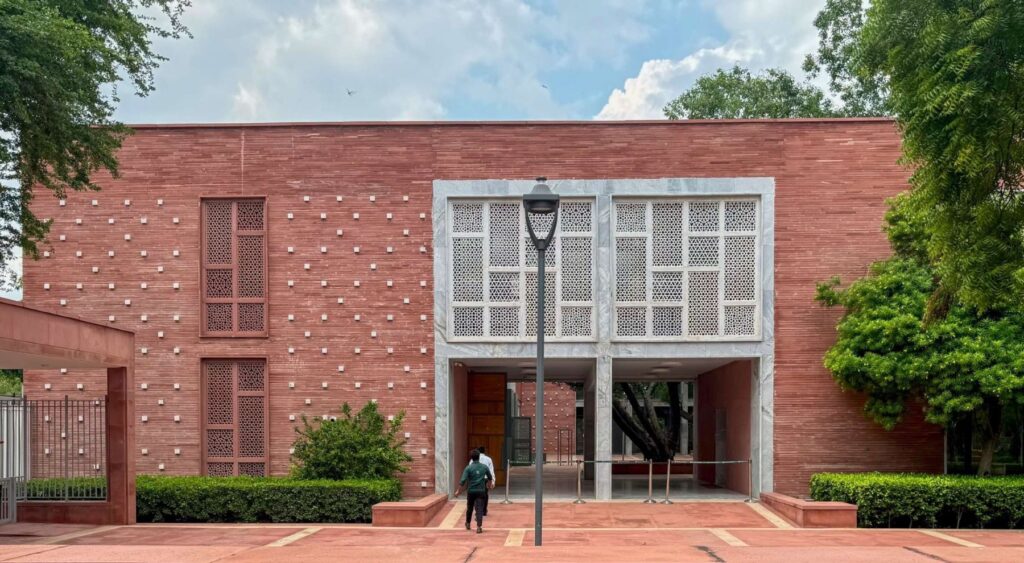
In keeping with this tradition, the surface of the red sandstone has been carved, amplifying the play of light and shadow on the richly textured, natural stone. To demarcate the procession of visitors from the Entry Plaza into the Café Court, the red sandstone façade transforms into a delicately carved, white marble screen, signifying entry.
The tradition of geometric forms within Mughal architecture has influenced the design of the Site Museum. For the Mughals, geometry manifested a cosmic order. The arrangement of carefully proportioned spaces imposed a discipline for inhabitation. However, this fidelity to geometry also facilitated a heightened human awareness of the powerful union between illumination and volume.
Thus, Mughal architecture imbued space with a sense of the terrestrial frame of this world, while also evoking an awareness of a greater cosmic order. The spatial evolution of geometry into powerful forms was not enough to satisfy the Mughals; the great refinement of this aesthetic practice emerged only as every surface was adorned with detail, texture, and colour, revealing architecture as a kinetic spectacle of great consequence.
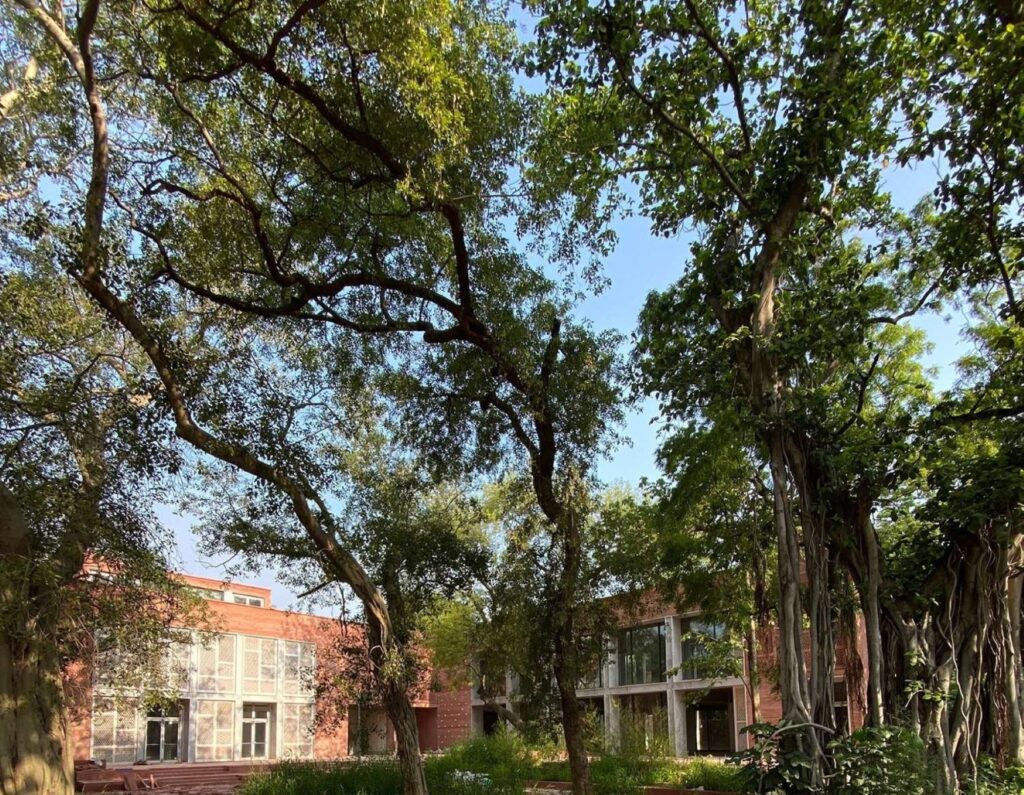
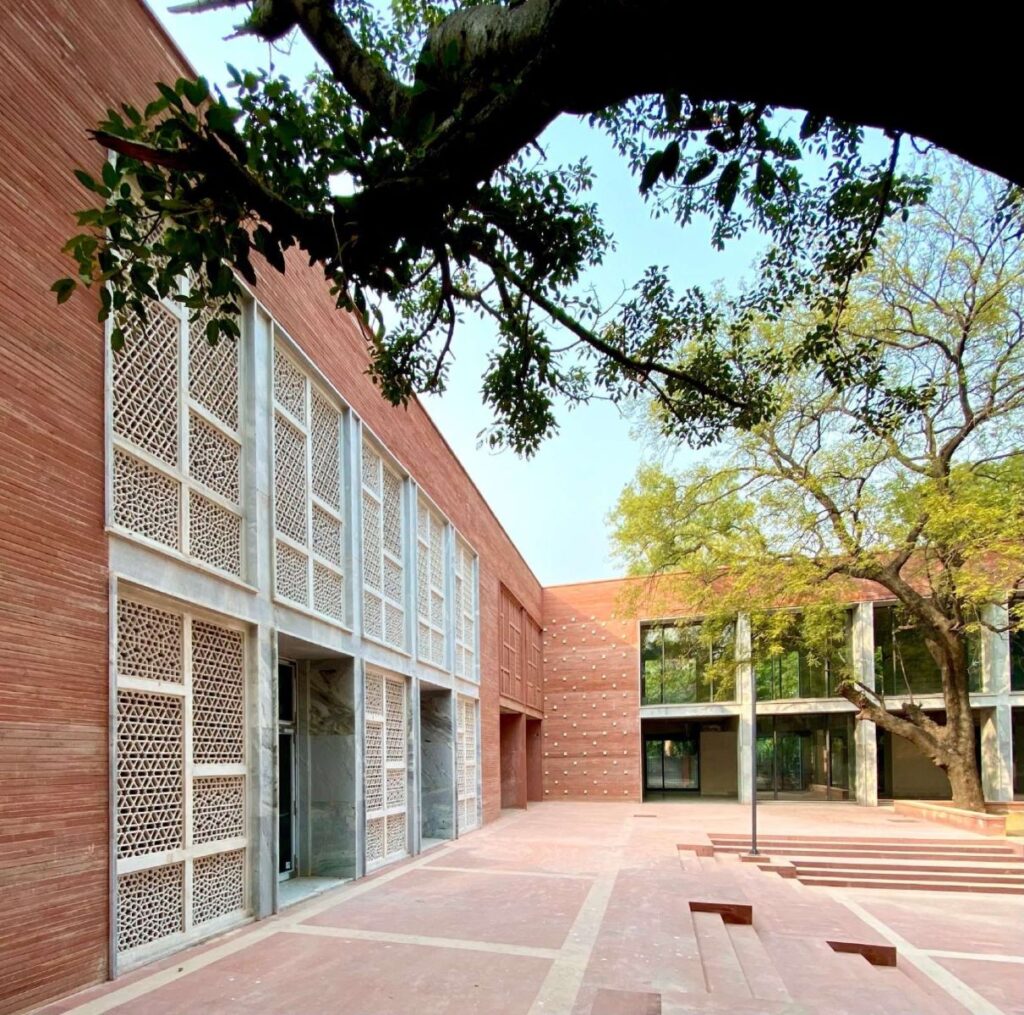

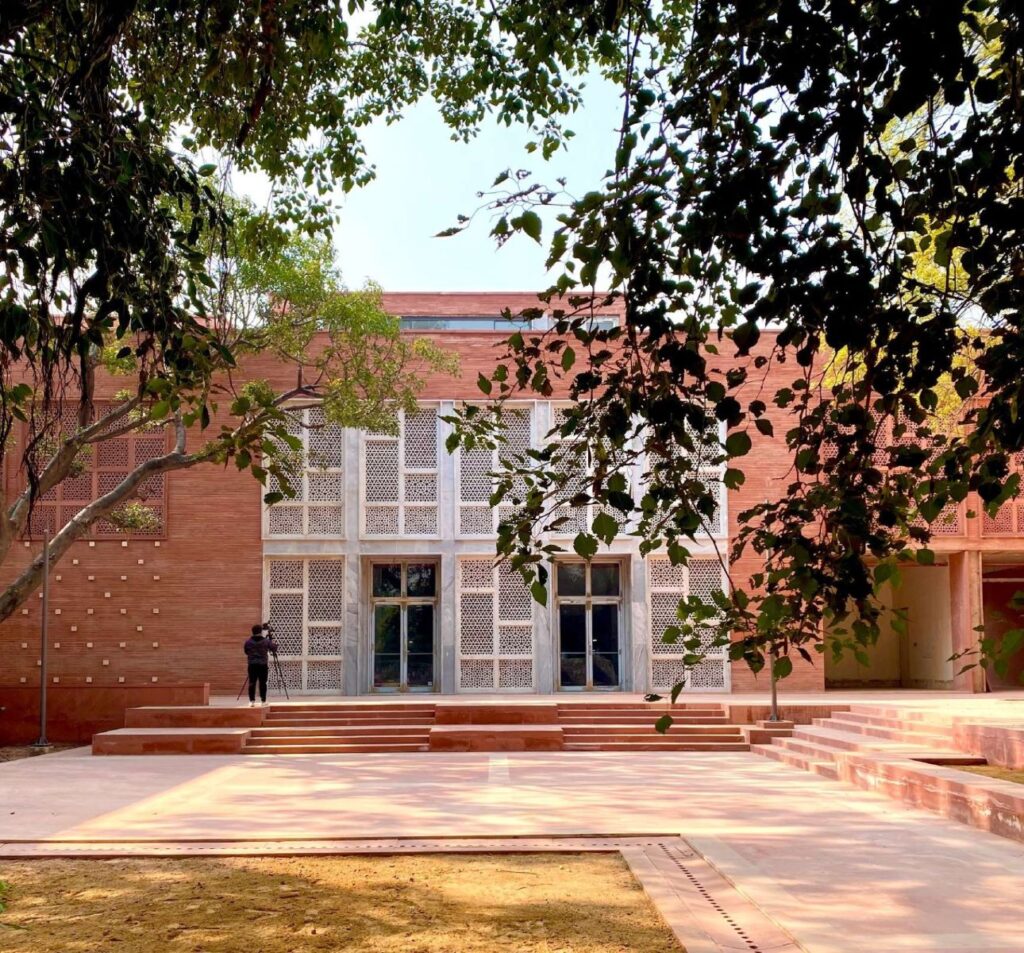
To enter the museum galleries, visitors descend from the Entry Plaza into a wide, ramped garden and walk through an Entry Gallery beneath the access road above, arriving into the Vestibule Gallery at a depth of six metres below the plaza. The interplay between natural light and space begins at this point of descent. The threshold into the Entry Gallery is illuminated by diffused light from a large skylight above.
The Vestibule Gallery introduces visitors to the Model Gallery, showcasing a virtual display of the entire site as it existed during the Mughal era. From the Vestibule Gallery, visitors may visit the museum exhibits in the Permanent Gallery, or ascend the steps and proceed directly to the Humayun’s Tomb Complex. The gallery spaces for the Humayun’s Tomb Site Museum are arranged in a sequence of intersecting squares, with wide column spans of eight metres to enable curatorial flexibility for exhibit design.
Given the increased traffic of visitors expected at the site, the public circulation sequence has been organized along a primary axis, spanning the entire length of the Museum. Natural light, filtered through skylights and open courtyards, illuminates the galleries. These open courtyards are critical aspects of the gallery, enabling curated displays of Mughal architectural artifacts, including façade treatments, landscape elements, and ornamental traditions. Complex engineering systems required for a modern museum are woven around each gallery through dedicated service corridors, thus facilitating optimal curatorial and museum management protocols.
Mughal emperors and their architects accorded great worth to the relationship between form, space and material. Their mastery lay in achieving a delicate balance between boldly proportioned exterior mass, and lyrical sculpting of interior volumes. In their use of stone masonry to sculpt the forms of their mausoleums, the Mughals conveyed an impression of permanence that characterizes their architecture. Thus, the monuments of the past remain contemporary simply by evoking a sense of timelessness.
The Site Museum aspires for a similar sensibility in the visitor experience. The high-ceilinged Permanent Gallery, with an indoor area of over 1000 square metres, is the largest singular gallery space in the entire museum. A wide courtyard flanks the north wall of this gallery, allowing light to wash across the marble floors and walls. The floor surface of this courtyard is patterned with glazed, coloured tiles, evoking the floral motifs that adorned Mughal-era monuments. The stone-lined alcoves in this courtyard will display reconstructions of prominent architectural elements of monuments and landscapes from the greater Nizamuddin area.
The south wall of the Permanent Gallery features four skylit niches, each 4 metres wide and 6 metres tall. These niches enable curators to display large objects below natural light while protecting them from the weather/exterior/environment. Given the large floor area, overhead skylights diffuse filtered light onto the polished marble floor. This subtle play of light and shadow illuminates the space and reflects upon the plaster of the pleated ceiling above, creating a geometric imprint.
Adjacent to the Permanent Gallery, the Finial Gallery will house the restored copper finial of Humayun’s Tomb, as well as other original architectural elements recovered during the conservation effort undertaken at the Humayun’s Tomb complex since 1997.
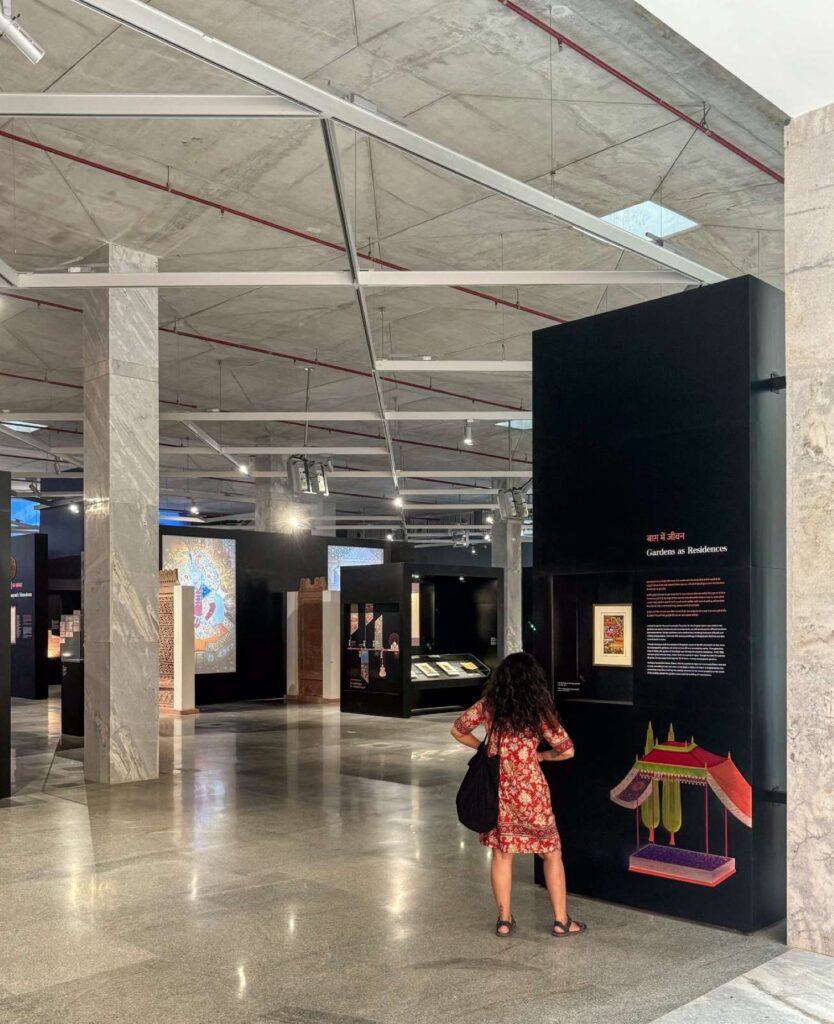
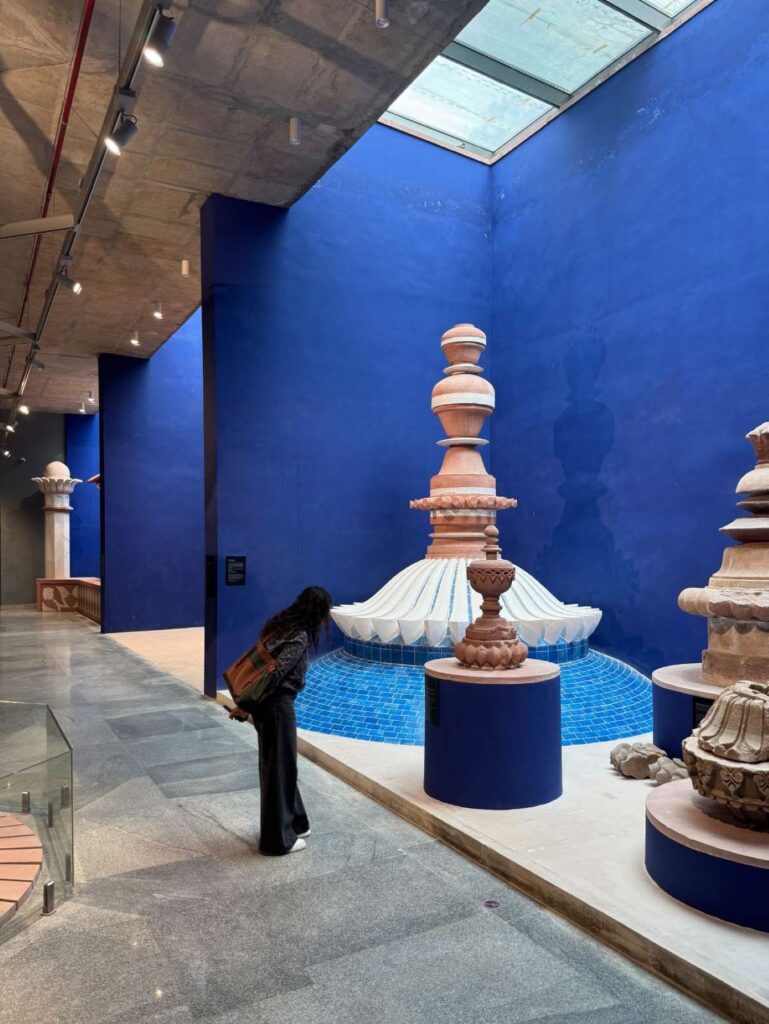
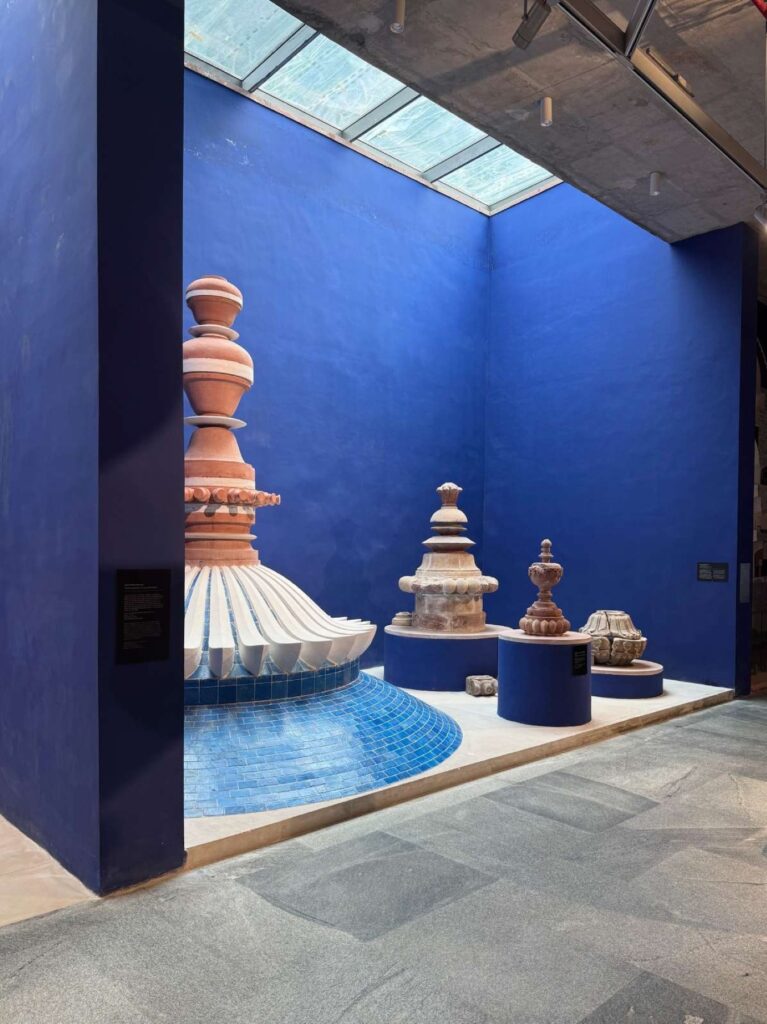

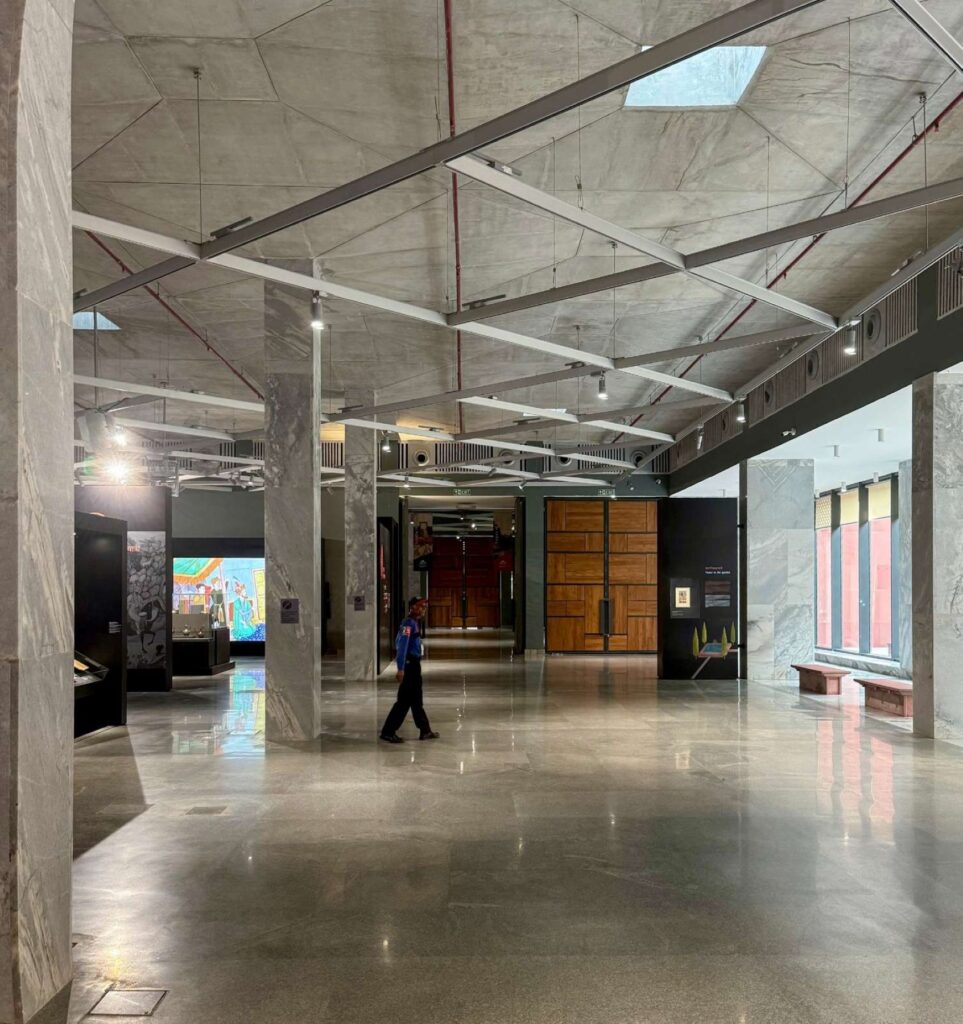
The Finial Gallery leads into the second Vestibule Gallery, situated along the axis of the Sundar Nursery promenade above. This space, marked by a single column at its centre, offers the choice of ascent to Humayun’s Tomb or to Sundar Nursery. In each case, the re-emergence of the visitor from the subterranean to the terrestrial plane is spatially distinct. The gallery and ramp leading to Sundar Nursery engage with a cherished Mughal motif—the architecture of water. The scent and sound of water are palpable as visitors emerge from this Vestibule Gallery.
As they ascend into the arbour of Sundar Nursery, a scalloped fountain—the ‘chinikhana’—offers a cool and welcome threshold for entry into the garden realm. For visitors proceeding to Humayun’s Tomb, the ramped garden of the Long Court, sculpted under the canopy of large trees, offers a release into the walled compound of the Tomb enclosure.
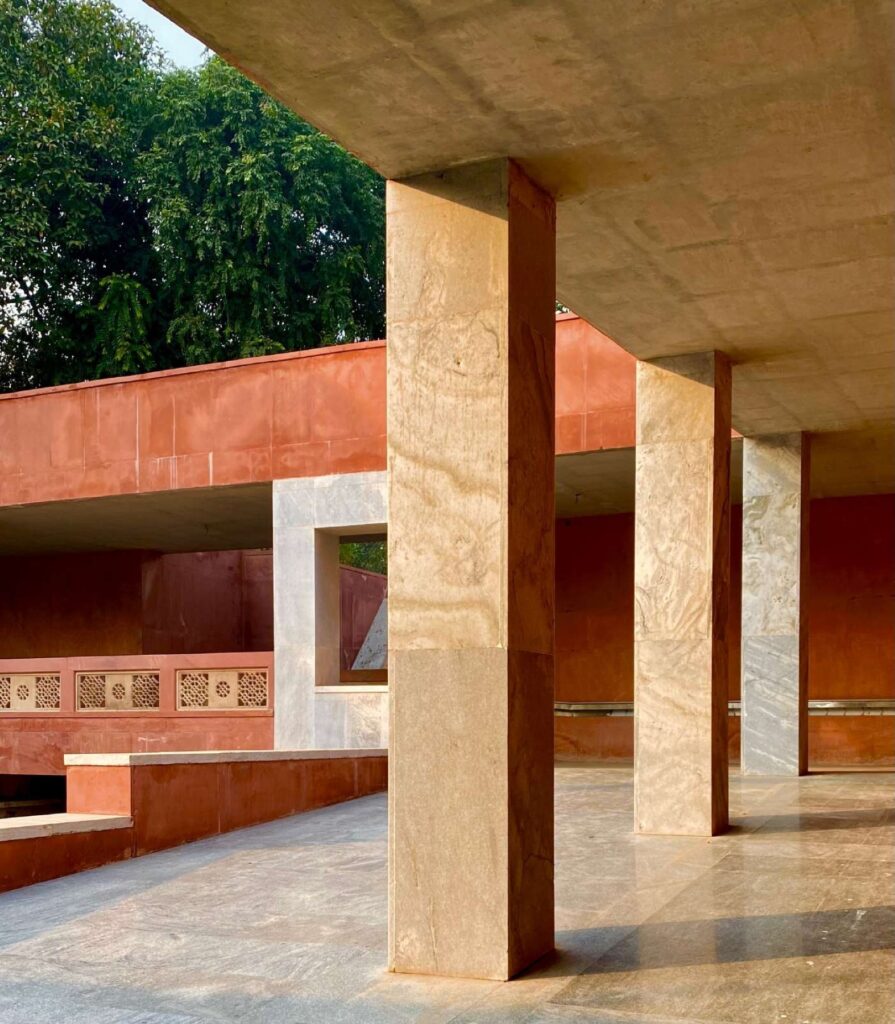
The architecture of the Humayun’s Tomb Site Museum is perhaps best expressed in the terrace garden plaza—its façade to the sky. Sheltered beneath the canopy of the mature trees on the site, this stone plaza reveals only a modest hint of the museum below—soft light emitted at dusk through the marble-screened skylights.
For visitors to experience the magnificent craft traditions that were introduced to India during the Mughal period and which continue to flourish in myriad ways, the contemporary architecture of the Site Museum aspires to ‘inhabit’ the spatial past. In evoking the tactile material culture of the Mughals, it engenders an awareness of the lineage of craftsmanship that has endured across five centuries. The builders of Humayun’s Tomb created an absolute and enduring edifice—an exemplar transcending the vicissitudes of their era. The Site Museum prepares present-day visitors to behold this fantastic achievement.
Project Drawings:
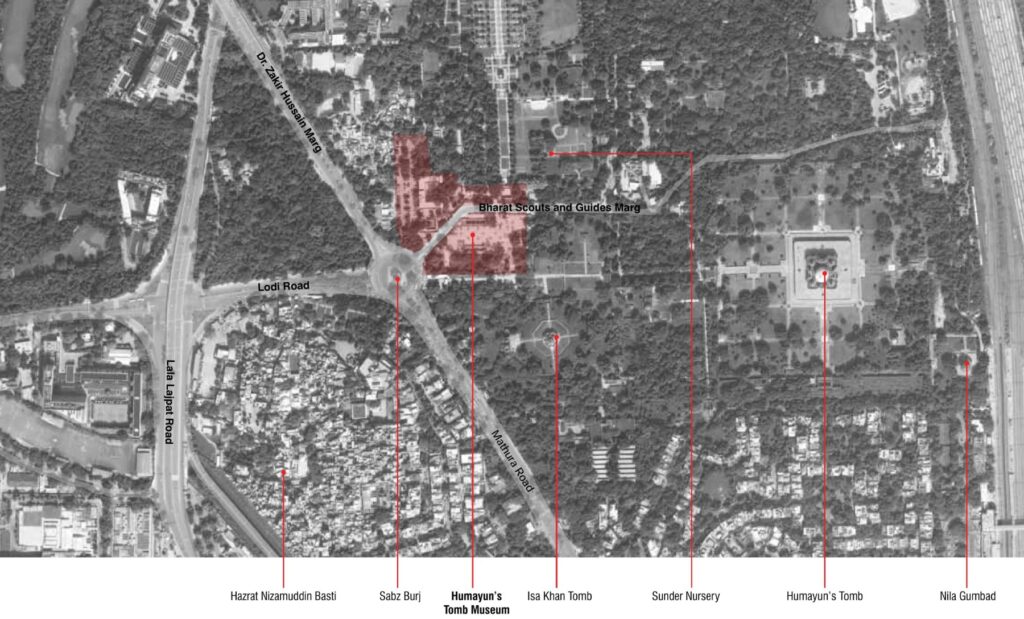
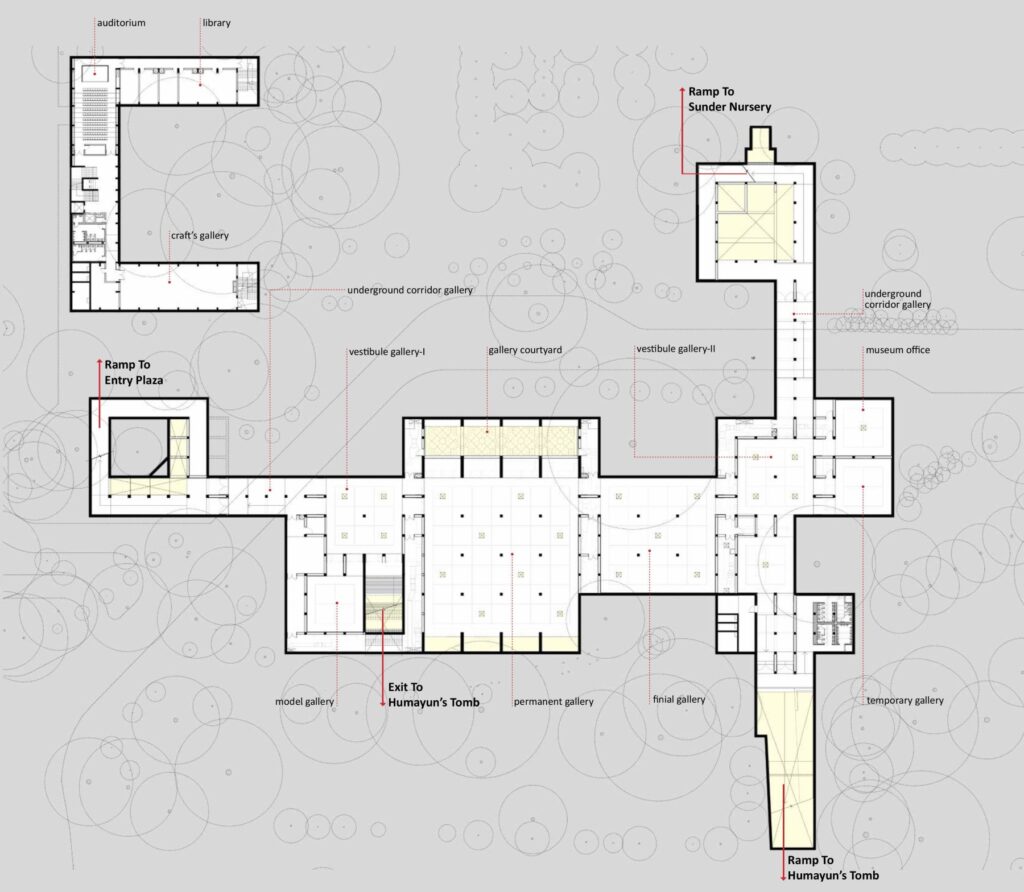
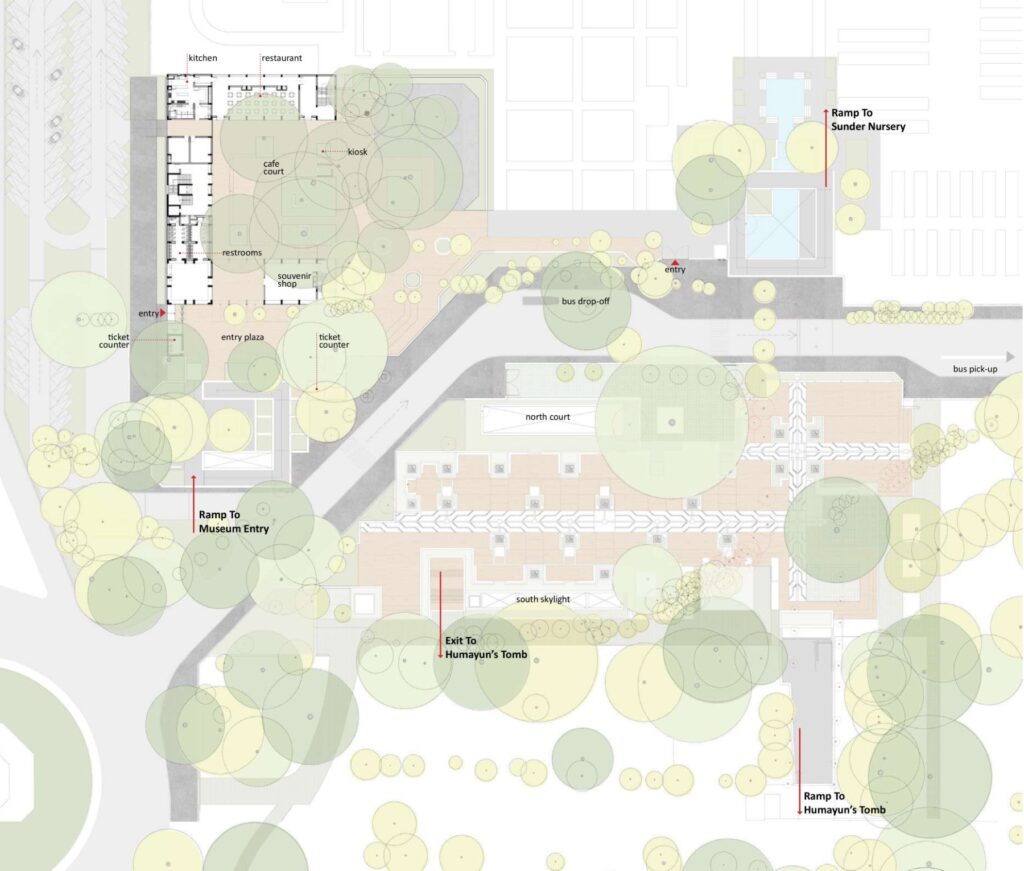
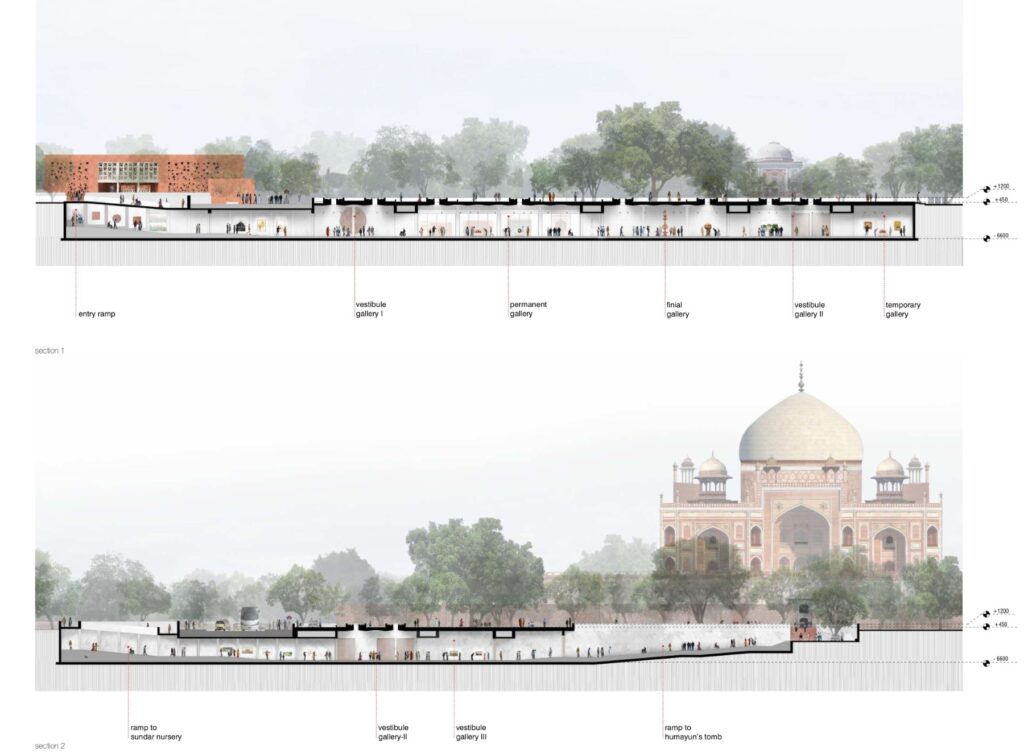
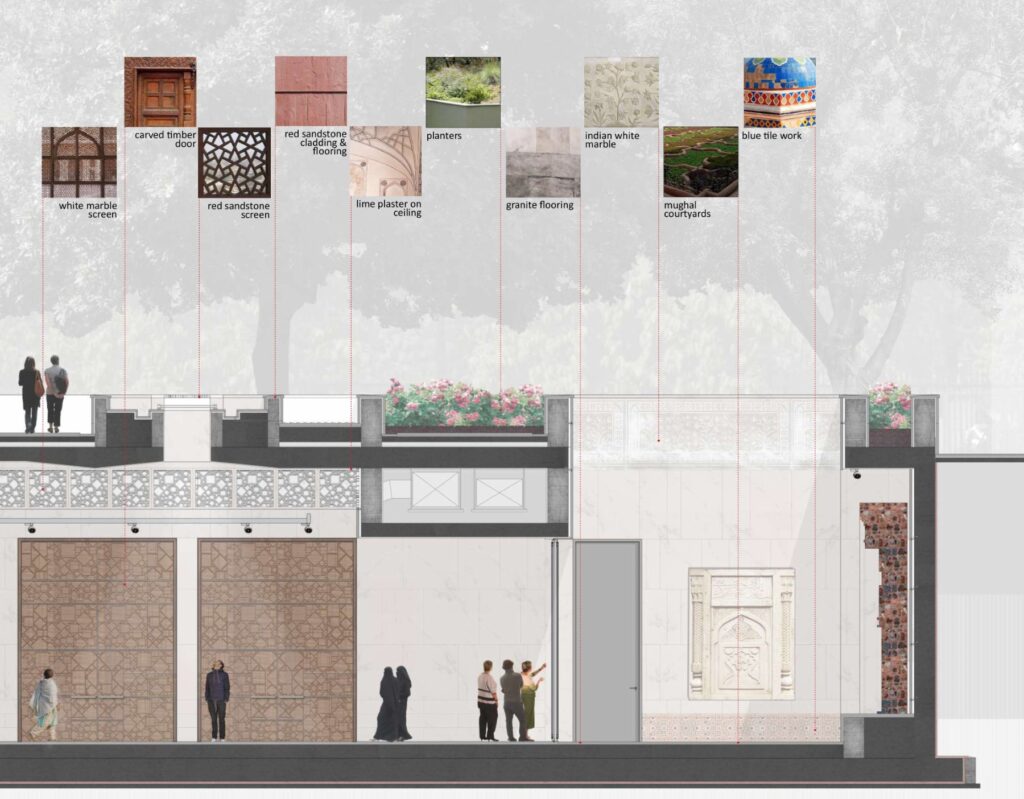
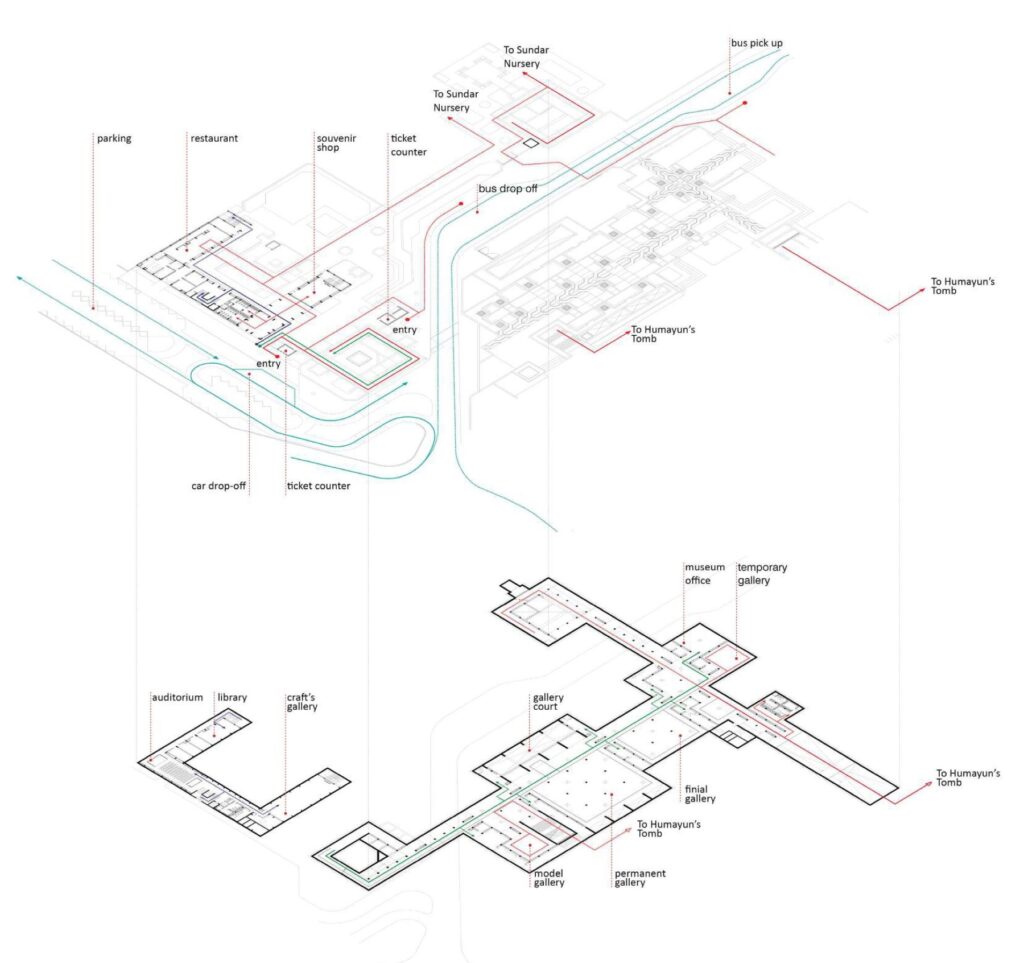
Gallery—Construction Process:



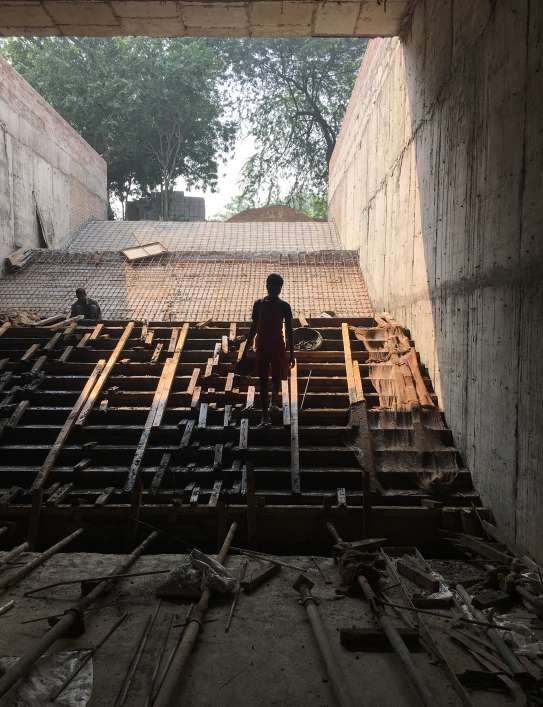
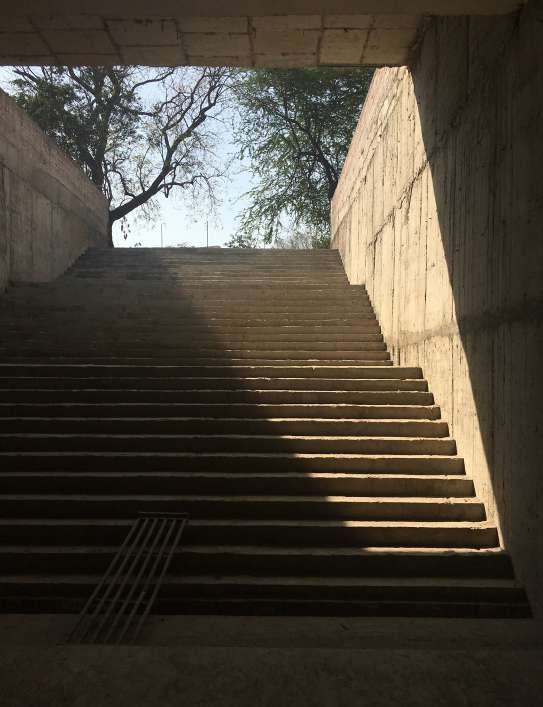
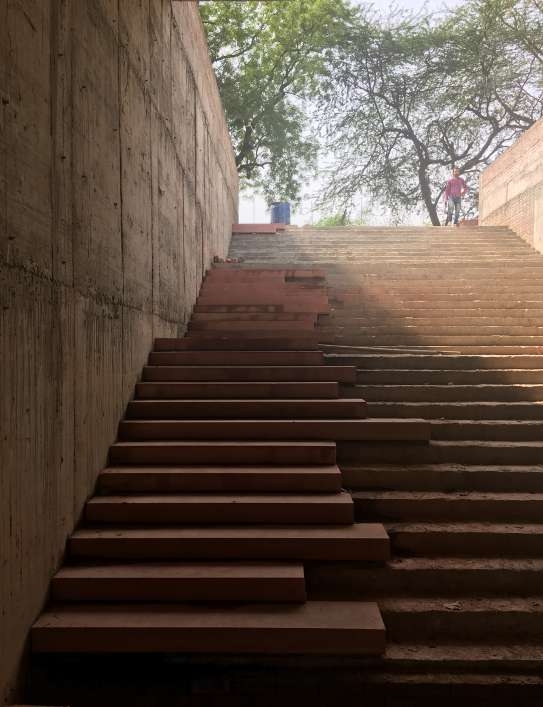
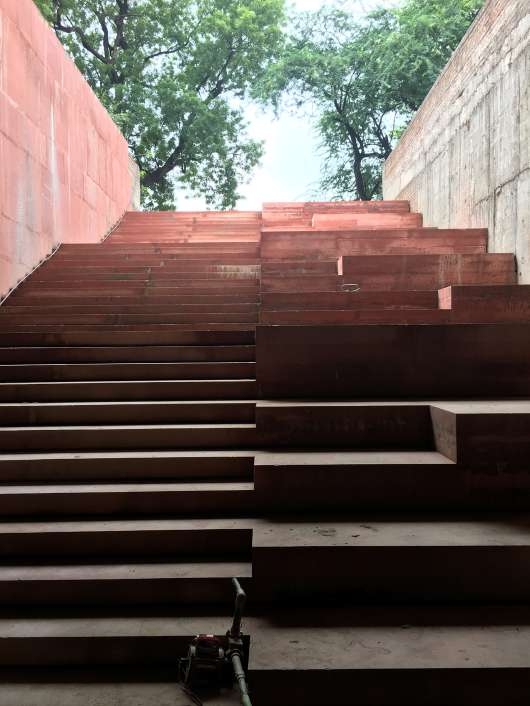

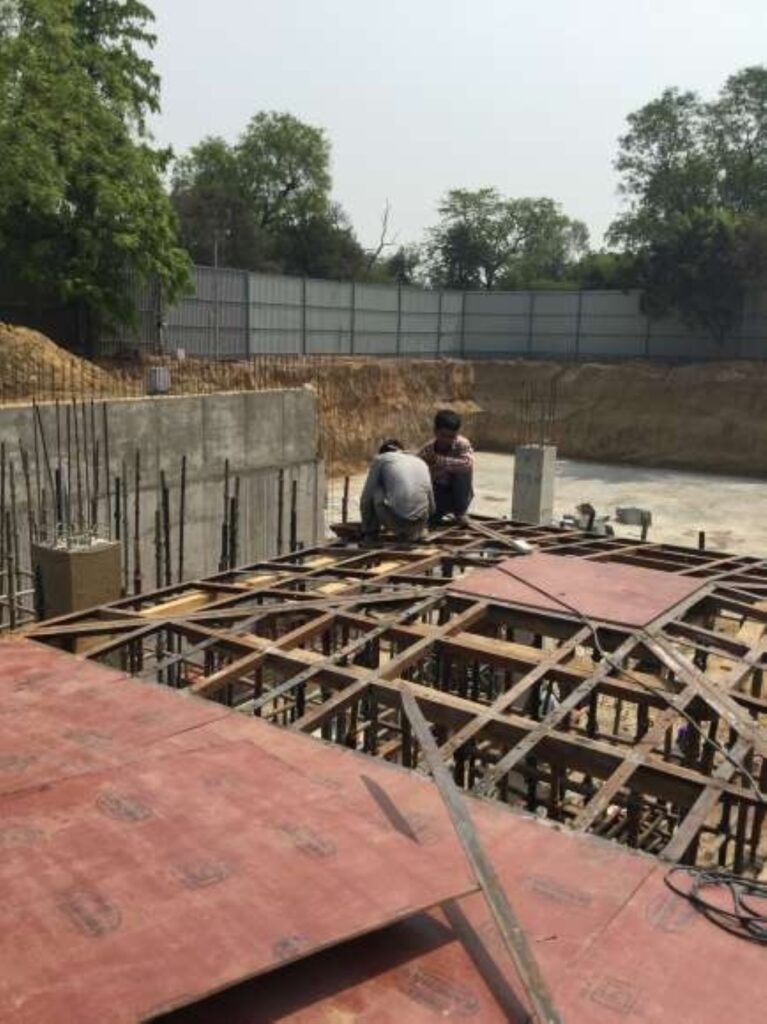
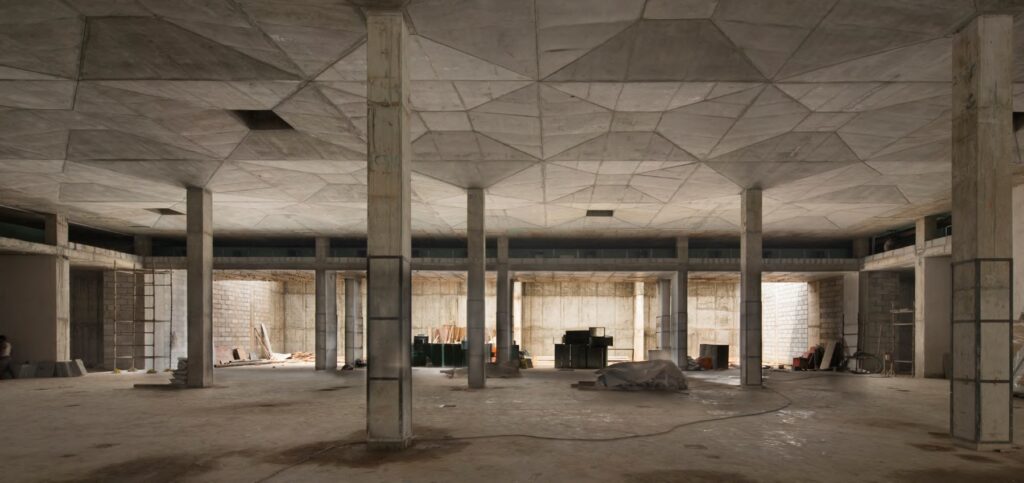




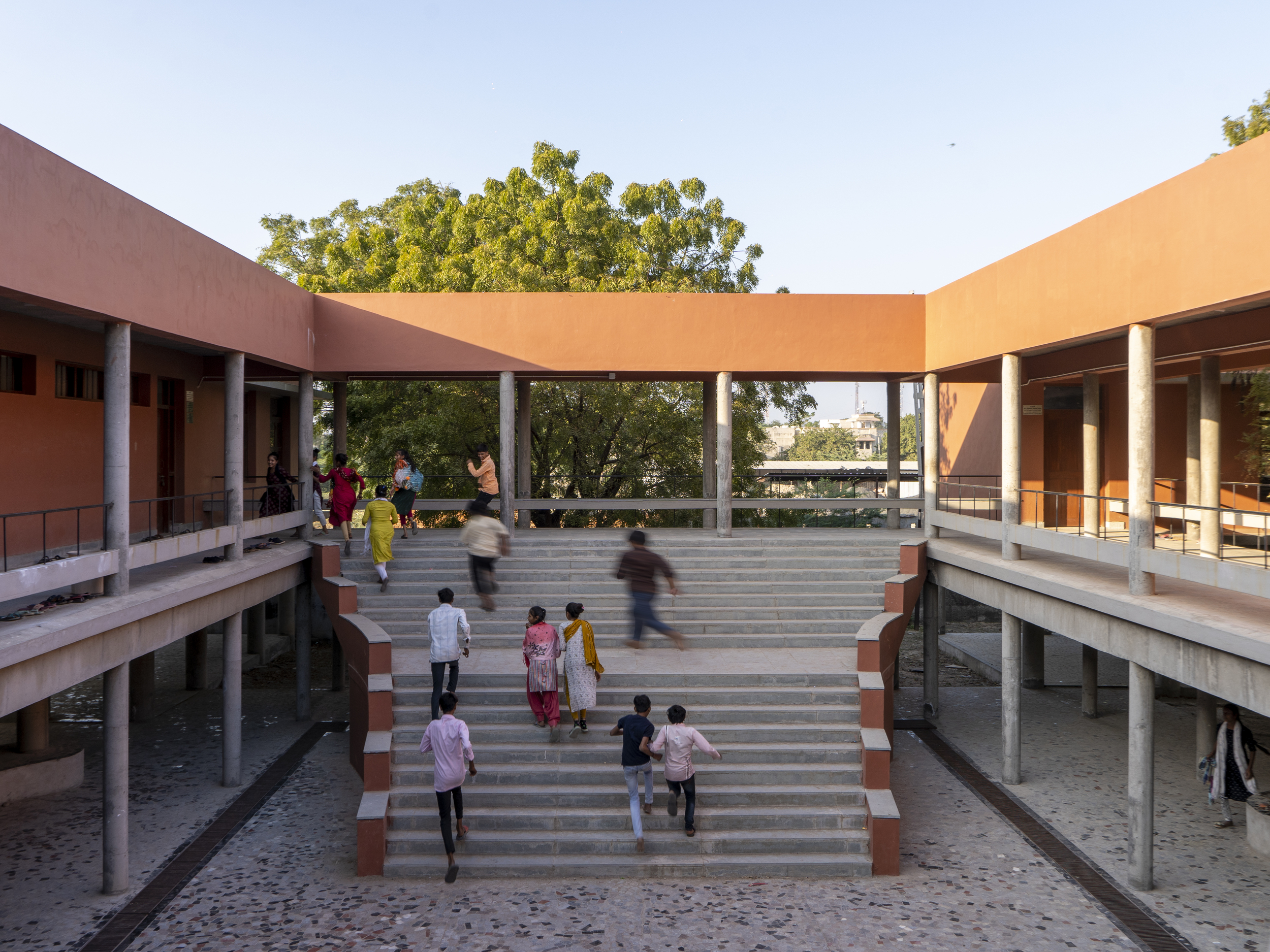




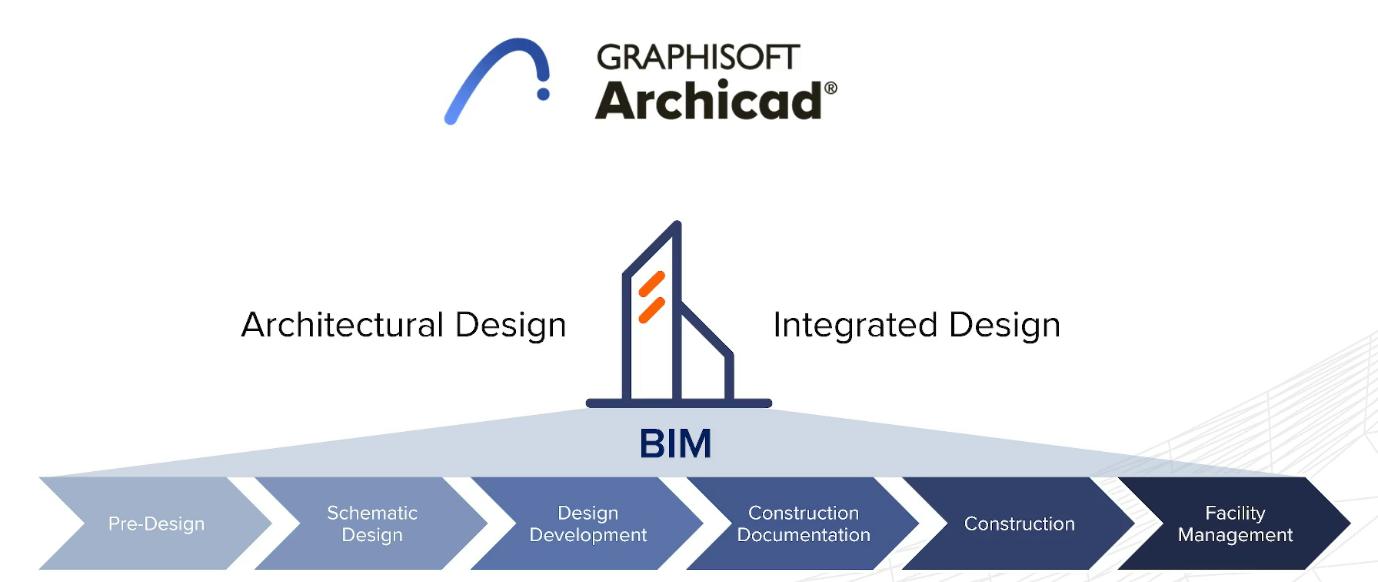
One Response
Very interesting.